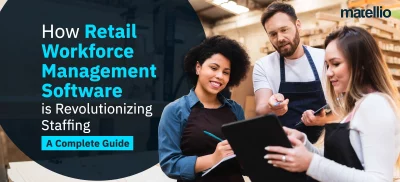
Retail industry is witnessing a great paradigm shift.
Today, consumers are more powerful than the retailers. They closely influence the trends via digital channels, doing extensive research to make purchase decisions, and expect an omnichannel experience across all touchpoints.
Retailers are facing challenges to stay ahead of the competition curve and deliver new business capabilities faster. For instance, bulk of spreadsheets have been replaces bu advanced analytics-based merchandising reliant on big data and cloud and machine learning models. Similarly, logistics and store operations are trying to improve consumer convenience by upgrading their operating models for picking and shipping. Businesses’ demands for tech-enabled capabilities are compelling technology executives to advance/accelerate their technology-adoption schedules.
An increasing number of leaders have come to recognize the critical role of the public cloud in facilitating their technological reinvention. They argue that cloud technology is all set to revoltionize at least 1/3rd of the global retail industry, smoothly shifting the workloads from legacy systems to mondernized counterparts.
Here we are highlighting some of these driving factors that will help retailers harness true business potential by integrating cloud to their core processes.
1. Pricing and margin management
Pricing is the chief consideration for consumers of all kinds. At the same time, incorrect prices could significantly impact gross margins and sell-through rates and augment the traction time. Businesses must stay aware of the competitor’s prices, analyze margins and sales implications, and vary the store’s product pricing accordingly to maximize profits.
However, calculating the price for which you should be selling your products is daunting. There is a lot of data analysis involved, and most of the merchants still operate manually. With data distributed across multiple channels, deriving insights is difficult and time-consuming.
This is where cloud computing comes in. Cloud data platforms can ingest multiple sources of data and prepare them for analysis. This can save an enormous amount of time for data specialists and free them to focus on modeling. Merchants are now aligning their processes with CIO organizations and analytics leaders inside the company to gain real-time analytics of the data and curbing the data gaps. With efficient cloud solutions, time insights, and informed pricing decisions, merchants can tap the most profitable opportunities.
2. Website and recommendation-engine personalization
Personalization is one of the most in-demand shopping aspects today.
By 2020, 51% of consumers expect that companies will anticipate their needs and make relevant suggestions before making contact. 88% of U.S. marketers reported seeing measurable improvements due to personalization, with more than half reporting a lift greater than 10% (Source).
Personalization helps merchants ensure that the right products are displayed before the right customers to increase prosperity. Therefore, the feature directly correlates to the incremental revenue and increased conversion rate.
With cloud solutions, merchants can combine multiple data sources to get a 360-degree view of the customers. The systems are scalable enough to adjust for the grownng numbr of products, taking care of the customers regardless of their specific choices and wide range of products. The scale of the cloud and the recommendation platforms it offers enables retailers to take action quickly, such as setting up A/B testing scenarios, validating performance, and iterating on their personalization algorithms.
3. Loyalty-program management
Company CMOs don’t struggle to acquire new customers as much as they find retain the old ones challenging. These are the customers who often make purchases and have higher lifetime value than the new customers. Loyalty programs have been a tradition tool. However, there are multiple challenges down the line such as indtifying the customers, data is often siloed at the store level and generally not processed in the real time.
The cloud can integrate multiple data sources to enable a unified view of consumers across transactions and channels (in-store, mobile, web, and even social media). It can also power both real-time and batch data processing, thus solving significant technological challenges. Furthermore, CMOs can take advantage of cloud-based capabilities to engage customers through personalized digital promotions based on real-time big-data analytics. For example, by integrating mobile and Web analytics tools with loyalty programs, they can design the right advertisements, use geospatial analysis capabilities to enable geofencing, and employ natural-language processing (NLP) for sentiment analysis. Retailers can also develop resilient and scalable loyalty apps on cloud platforms and leverage the platforms’ marketing tools to drive app downloads.
Also Read: Cloud Migration Strategy: Driving Your Business Growth
4. Real-time inventory view
Successful omnichannel retail often relies on real time inventory view. However, retailers don’t get the level of clarity they need. While buying online, a customer may opt for store pickup and yet the product won’t be available at the store. This can be either due to the reason that POS and inventory systems are not updated in real time or the item is in the inventory but not in the expected location. Under both circumstances, retailers don’t just lose the deal but also valuable customer.
Cloud data platforms could construct a single real-time source of truth for inventory levels across all channels. All users, both customers and employees, by connecting into data pipelines and unifying all data sources with low latency and high transaction throughput. Some data platforms may even allow local store inventory to be published to third-party e-commerce channels and search engines, thus driving additional revenue.
Also Read: Explore how Retail LMS Software can turn high turnover into high performance by empowering employees with targeted training and skill development.
5. Omnichannel order fulfillment
One of the advantages of eCommerce stores over tradition retail is the widespread network. These store networks help them fullfill customer orders faster and reduce delivery costs. However, if the system lacks real-time information sharing, it would create havoc for the entire store. Removing an item from one store in the network could damage sales and profits for the store, specially if the profit margin of product is better on the store than in other channels. Besides, if the customer opts for in-store pickup, lack of visibility into store and staffing can can disable online channels from providing exact pickup times.
This is where cloud platforms could aid e-commerce leaders through ML-based analytics platforms, which reduce the need to hire best-in-class data scientists and engineers or have substantial on-premise computing and storage capacity. Furthermore, they provide the analytical capabilities needed to identify the stores closest to the customer that carry the items the customer has chosen, real-time margin calculation comparing store pickup with warehouse shipping, and accurate order-ready-time prediction based on store, items in the basket, time of day, etc. Indeed, with e-commerce sales poised to grow at around three times the rate of store sales, retailers must leverage the cloud to improve their e-commerce margins. Retailers are trying to build analytics engines to help them make trade-offs (for example, in the margin or volume) and offer customers better visibility. Still, they are impaired by the lack of sufficient data and talent as well as the required computing and storage capacity for making these data-heavy calculations.
6. Inventory optimization
Merchants face significant challenges in managing the numerous variables involved in inventory management. The lack of accurate forecasts, limited automated solutions for consumer-packaged-goods (CPG) promotions, seasonality of products, and unexpected consumer trends are just some of the possible failure points that can and do jeopardize inventory management. The lack of standard attributes makes it very difficult to define substitutes for a retailer’s product portfolio. This can lead to random cannibalization, especially during the promotion window. This manifests in the excess inventory of certain products and stockouts of other products, creating inefficiencies and additional inventory costs.
Merchants, analytics, and CIOs should work hand-in-hand to leverage cloud infrastructure and analytics platforms to build both predictive and prescriptive inventory-forecasting engines to meet the challenges of optimizing inventory management. Sophisticated machines can even factor seasonality, promotions, trends, and product substitutes and complement into their forecasts. When used in conjunction with cloud-based APIs for supplier promotion, these engines can improve the accuracy of predictions and increase the predictability of inventory levels.
Read More: Discover how retail inventory optimization solutions can streamline operations, reduce costs, and enhance your supply chain efficiency in the modern retail landscape.
Are you a retailer looking for advanced cloud solutions?
Well, look no further. Tech specialists at Matellio are right here to help you. Whether you want to build advanced cloud solutions or gradually modenize your legacy systems, Matellio’s expert team can make the process smoother for you while incorporating your business challenges and helping you meet the organizational goals. To begin now, contact us.



